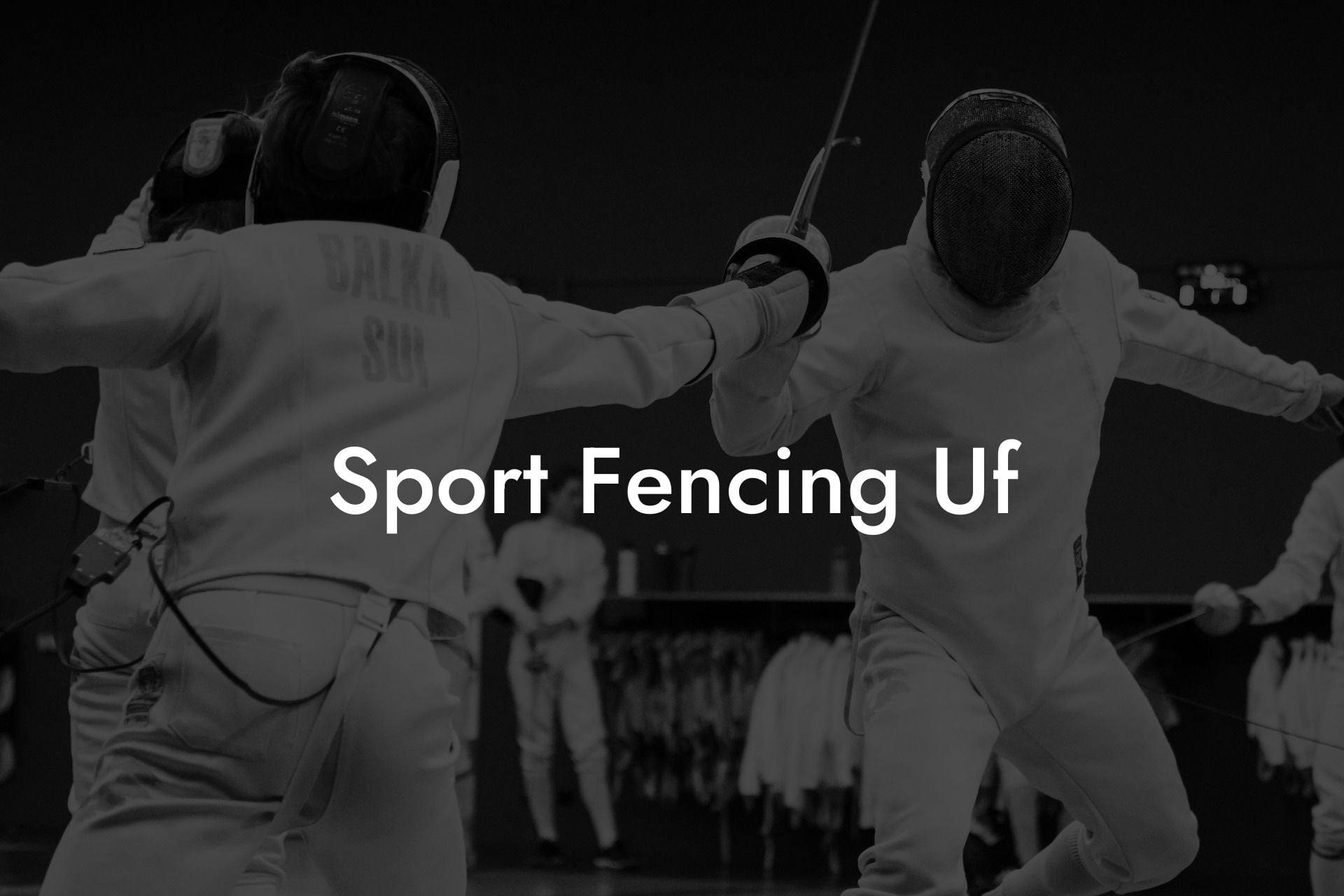Discover the thrilling world of sport fencing and its exciting adaptation known as "Sport Fencing Uf." This competitive and athletic sport offers a unique blend of strategy, mental focus, and physical prowess, making it a fantastic choice for athletes of all ages and skill levels. Join us as we explore the ins and outs of sport fencing UF, delving into its rules, techniques, and the essential equipment you'll need to get started.
Sport Fencing Uf Table of Contents
What is Sport Fencing Uf?
Sport Fencing Uf, also referred to as "Universal Fencing," is an inclusive, modern form of the traditional sport of fencing. It encompasses various disciplines, including foil, épée, and sabre, with unique rules and scoring systems designed to encourage a more strategic and engaging competition. The primary goal of sport fencing UF is to provide a platform for athletes of diverse backgrounds and skill levels to enjoy the sport in a safe, competitive environment.
Understanding the Different Disciplines
- Foil: A light, flexible weapon used primarily for thrusting. Scoring in foil is based on valid touches to the opponent's torso, with a right-of-way rule determining the point in case of simultaneous hits.
- Épée: A heavier, stiffer weapon used for both thrusting and limited slashing movements. The entire body is a valid target in épée, making it a more complex and nuanced discipline than foil. There is no right-of-way in épée; whoever hits first (or simultaneously) scores a point.
- Sabre: A cutting and thrusting weapon characterized by its distinctive curved guard. The target area in sabre is the entire body above the waist, and right-of-way rules apply similarly to foil. Sabre is highly dynamic and fast-paced, emphasizing aggressive attacks and swift footwork.
Basic Techniques and Tactics
Regardless of the chosen discipline, successful sport fencing UF athletes must master a range of technical and tactical skills, including:
- Footwork: Proper footwork is crucial in fencing, as it allows the fencer to quickly advance, retreat, or change direction in response to their opponent's movements.
- Attacks: Fencers employ various attack techniques, including lunges, feints, and beat attacks, to score points on their opponents. Understanding when to attack and how to maximize the likelihood of success is a central component of fencing strategy.
- Defense: Defending against an opponent's attacks involves the use of parries, or blade movements that deflect the incoming strike, as well as evasive footwork and body movement.
- Counterattacks: An effective counterattack involves striking the opponent immediately after they have failed in their attack, capitalizing on their vulnerability and potentially scoring a point.
Sport Fencing Uf Example:
Imagine a sabre bout between two skilled fencers. Both athletes quickly close the distance and execute simultaneous attacks. However, one fencer is slightly faster and scores a touch on their opponent's arm, earning a point for their strategic use of right-of-way. The opponent then attempts a beat attack, but the first fencer parries the strike and quickly follows with a riposte, landing a valid touch on their opponent's chest. By demonstrating exemplary technique, footwork, and tactical awareness, the successful fencer claims victory.
Now that you have a better understanding of sport fencing UF, its disciplines, and the techniques and strategies involved, it's time to dive in and start your fencing journey. Whether you're a seasoned veteran or a complete novice, Anchorage Fencing Club can help you sharpen your skills and fuel your passion for this exhilarating sport. Be sure to explore our other guides and resources, attend local classes, and don't hesitate to share your newfound knowledge of sport fencing UF with friends and family. The world of fencing awaits you!













